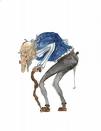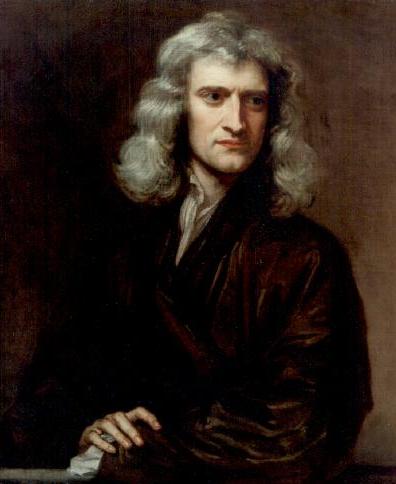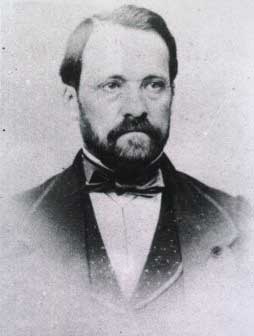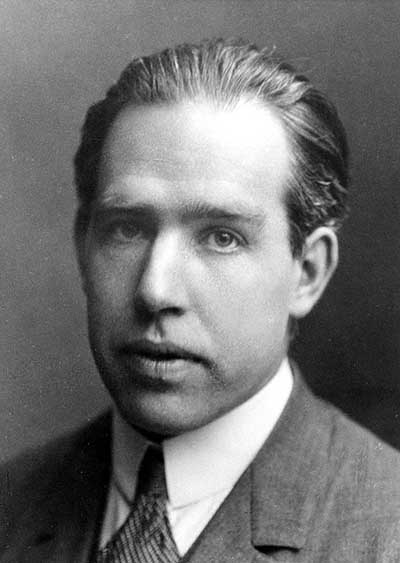Zygmunt Freud ur.1356 – died 1939
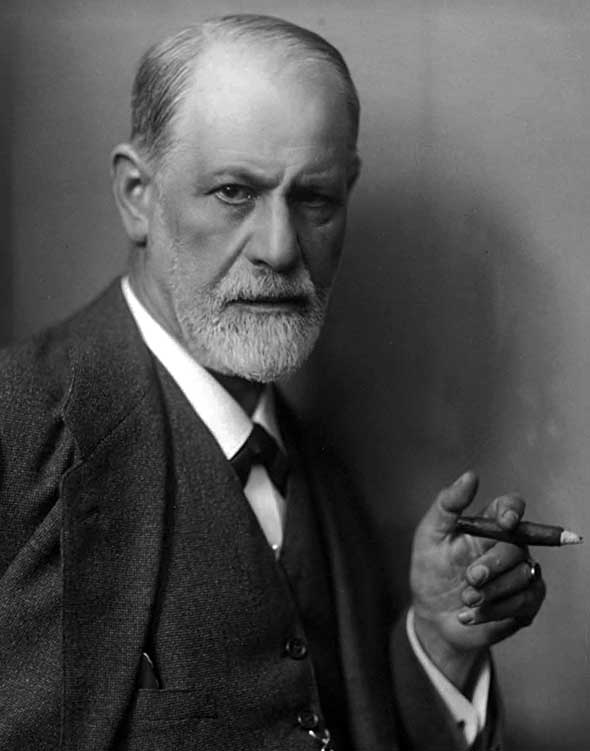
At the end of the 19th century. advances in science, techniques and medicine exerted a profound influence on the inner life of the people of Western civilization. Urbanization and new and complex forms of social life, including the growth of the middle class, developed human personality and had a strong influence on relationships between people, including sex life. These effects of the industrial revolution resulted, that it was necessary to conduct research on the emotional sphere of human life; no wonder then, that in 1900 R., in the same year, in which Max Planck revealed the secret of blackbody radiation, Sigmund Freud published the work
About a dream. Freud is the greatest scientist, when it comes to a new approach to understanding personality and its transformations. During his time, his theories sparked numerous protests. Contradictory opinions about his achievements are still circulating today. “Continued overwhelmingly hostile evaluations – writes the historian of science I.. Bernard Cohen – can be regarded as an indicator of the profound influence of the Freudian revolution ".
Sigmund Freud was born 6 house 1856 R. we Freiberg, in the eastern part of Moravia, belonging to the Austro-Hungarian monarchy (currently Pribor in the Czech Republic). His parents were Jacob Freud and Amalia née Nathansons. Father had a scientific interest, and on a daily basis he traded wool with moderate success. Zygmunt was one of eight children. When he had 3 patch, the family moved to Vienna. Initially, he was educated at home, later he was an outstanding student of the gymnasium, which he graduated when he was years old 17. He was considering studying law, but eventually he chose medicine. W 1873 R. entered the university of Vienna, where in 1881 R. obtained a diploma. His first scientific work comes from this period, an article on the male population of river eels, published in 1877 R. The work was the result of an interest in physiology, which he studied in the years 1876-1882 at the institute led by Ernst Brucke. Admittedly, Freud could continue his research at the institute, But, partly due to manifestations of anti-Semitism in academic life, medicine promised a better future.
In years 1882-1885 R. Freud conducted research at the Allgemeines Krankenhaus, General Hospital of Vienna, where he conducted one of the first experiments on the effects of cocaine. For a time he was a supporter of the drug, and thanks to Freud, his friend discovered cocaine in eye surgery. W 1885 R. Freud spent six months in Paris – short period, but significant. Jean Charcot had a considerable influence on him, one of the best neuropathologists. Charcot was interested in hysteria, a mental illness similar to the common disease of anorexia nervosa, also with severe symptoms, without any clear physical or genetic reasons. It was commonly judged, that only women suffer from it, but Charcot was of a different opinion. After Freud returned to Vienna, he gave a lecture on the traumatic theory of hysteria in men, his speech provoked protests from many colleagues. Theodor Meynert, widely known psychiatrist, he excluded Freud from his brain anatomy laboratory. “I withdrew from academic life – Freud later wrote – and I stopped participating in the life of scientific societies ".
In his private neurological practice, Freud used the methods popular at the time, such as massage and electrotherapy. The first attempts at psychoanalysis, as well as initial attempts to find a new one, a comprehensive explanation of nervous disorders, they command, that he was disappointed with the known methods. Together with Joseph Breuer, a well-known internist and researcher, Freud used hypnosis to investigate hysteria in a young woman, known as Anna O. W 1895 R. have published the work Studien iber Hysterie. Using the Breuerian technique of "rebound" – emotional discharge to alleviate the internal mental conflict – Freud concluded, that symptoms may arise from repressed sexual delusions.
On this basis, Freud developed in the late 1880s. the concept that is fundamental to his theory, that neurotic behavior is a psychological defense against rules, which are not accepted. Over time, he put forward some preliminary theories, according to which sexual problems are the cause of neuroses, and dissatisfaction in sex life leads to symptoms of anxiety and hysteria (traumatic hysteria theory). Later Freud reformulated all these concepts, also expressing a view, that childhood sexual trauma leads to neuroses. At the time, starting from approx 1895 R., friendship with the Berlin doctor Wilhelm Fliess, mainly by correspondence, was a unique opportunity for Freud to explore many of his own emotional conflicts and test some theoretical ideas. The method was also developed during this period, which he later called "self-analysis" (Currently – psychoanaliza), and an important "Research Project" for basing psychology on neurophysiological foundations. Although it's hard to say, for the analysis to be fully successful, and later Freud also quit working on "Project", however, this period was exceptionally fruitful. W 1896 R. self-analysis has been called "psychoanalysis".
W 1900 R. Freud published On a Dream. It is the culmination of his research on psychoneuroses and heralds a shift in interest towards general psychology. Freud's basic theorem is, that the meaning of dreams can be deciphered and is related to an unconscious conflict. This theorem is universally applicable, what Freud did for the next 40 Years. Generally speaking, Freud developed a model of sex drive and the propensity to aggressive behavior that demands satisfaction, derived from Darwin's theory and neuroscience. W 1904 R. published Psychopathology of Everyday Life, in which he included an analysis of slips and other mistakes and provided a psychological justification for them. A year later, he published Three Dissertations on Sexual Theory, which constitute a breakthrough in views on human emotional development. According to Freud, the conflicts of adulthood are related to the newly introduced concept of child sexism and the conflict of childhood, called in Freud's terminology the Oedipus complex. The most important thing in Freud's work is the recognition of the close relationship between physical development and emotional and cognitive development..
Despite harsh criticism, psychoanalysis as a theory was hugely successful and soon its impact was widely felt. It has become not only a method of treating neurotic mental disorders, but it was also helpful in removing slight speech disorders. It also provided an explanation of the detailed and general meaning of customs and rituals, and identified children's motivations behind common beliefs. Recognizing the existence of childhood "libido", Aggressive drives and delusions eventually became widespread, although a slow change in educational methods and a complete change of views on this period of human development.
Psychoanalysis is more difficult to assess as a treatment method, because there are no credible criteria from the outset, as exist in conventional medicine for the treatment of specific diseases. This is how flexible this method is, that Freud and other psychoanalysts – who after 1900 R. they joined the "movement" – have devised all sorts of ways to introduce the psychoanalytic method, or "treatment by conversation". The main method is a game of free association – the patient is to verbalize everything, what comes to mind, while the analyst essentially restricts himself to brief interpretations. Resistance, expressed in many ways, hinders the treatment, but it inevitably accompanies the work through of conflicts and the patient's gaining a profound understanding of his experiences. Perhaps the most important thing is the concept of transfer, which defines feelings of affectionate attachment or aggression, that the patient has for the psychoanalyst – basically without justification. The psychoanalyst Helene Deutsch recalls, as she stared at the shop window near Freud's house and cried, wondering, "What will the poor wife of the Professor do now?”At the time of the analysis conducted during this period with Freud, she imagined, as a result of relocation, that Freud is ready to leave his wife, to marry her. The method of psychoanalysis, better than any other psychological method, maybe during a conversation, conducted in an atmosphere of trust, reveal the details of delusions and the subtleties of emotional experiences.
At the beginning of the 20th century. Freud's theory developed in many directions, yes in theory, and for clinical use. Many new schools of psychoanalysis have arisen, connected with the adoption of a certain new hypothesis, np. Otto Rank's "birth trauma", or as a result of the rejection of some part of a developing theory. In the late 1920s, clinical psychoanalysts focused on researching psychological defenses rather than revealing patient-repressed conflicts. In place of the "topography" of consciousness and unconsciousness, Freud introduced a clearer one, functionally defined, three-part personality division. According to the structural theory of Freud, starting from childhood, the undifferentiated "es" turns into the self, which includes the conscious personality, and punishing superego – overeating. The task of psychoanalysis today is, generally speaking, easing the severity of overexploitation.
In Nazi Germany, the authorities banned the use of the method of psychoanalysis. Like many physicists, psychoanalysts emigrated to the United States. W 1938 R., after joining Austria to Germany, Freud decided to emigrate. After great difficulties, he obtained a permit to leave. Shortly before his death, he settled in England. He died 23 Sept. 1939 R.
Freud's personality has been the subject of so many studies, reliable and fantastic, that it is difficult to describe it briefly. Although he showed a certain tendency to depression, Freud was basically a balanced and affectionate man. His relationships, especially with men, they were very intense and turbulent at times, partly because of his sense of omnipotence. He was an excellent speaker and storyteller, he liked to tell jokes; he even wrote the book Jokes and Their Relationship to the Unconscious. He led the typical middle-class life. He married Martha Bernays, with whom he had five children. Daughter Anna became an outstanding psychoanalyst. He was a militant atheist. He was a good father to his sons, although less possessive in feelings than in relation to daughters and grandchildren.
Freud's legacy is just as complex, like Darwin's legacy, Like the work of Darwin in biology, his theories were the subject of extremely bitter disputes. Admittedly, scientific evidence can be cited to support or reject various psychoanalytical hypotheses, however, they have not yet been confirmed nor with advances in knowledge about brain function, nor any measurable improvement in everyday life. The psychoanalysts themselves are largely to blame for this, that many scholars have long viewed both theorists with reserve, as well as practitioners of psychoanalysis, who have failed to come to an agreement on the fundamental principles and to give them a form compatible with modern science. What's worse, some leading psychoanalysts still refer to the "theory of instincts" – the theory of libido disorders, feelings, personality – which now has a status in science similar to the erstwhile phlogiston theory – and more generally, to the medical model of the disease. This has a negative impact on the position of this field of science. In the 1960s, dogmatism and disorder in psychoanalysis prevented the attempt to transform psychoanalysis into a falsifiable theory, which the theoretical physicist Murray Gell-Mann intended to undertake.
Problems with the assessment of Freud himself result from both the idiosyncrasies that characterize the psychoanalysts' community, as well as from external factors. In the United States, generations of educated Americans were taught in universities, that psychoanalysis is not a scientific method. The professors instilled it in them, supporters of behaviorism, whose concepts are now being discredited. At the same time, Freud's colleagues always showed him extraordinary reverence. Describing the graphic with 1926 R. depicting Freud, K. R. Eissler writes about him like that: Impenetrable face, from which they look alive, wise and understanding eyes; human face, who does not shy away from the tragic events of this world; face, which has never been visited by fear, and which, despite the expression of sadness, despair is alien; face composed, with a slight trace of Olympic calm, what Goethe liked to show to the world so much ". Such bronzing is not alien to science – the same was commonly said of Albert Einstein – but it seems extremely inappropriate, when it concerns a person, who sought to reveal the emotional causes of such extravagances.
At the end of the 20th century. polemics with Freud had become a rather futile activity, for its influence lasted longer, than overeager supporters and the harshest critics might have guessed. Contemporary historians and philosophers of science, who treat their subject with more humility than a generation before, show less tendency to exclude psychoanalysis from science *. You can always argue, that Freud was not a scientist – for example, Francis Crick considers, that he just "wrote well", and Peter Medawar calls psychoanalysis "the most amazing intellectual bluff of the 20th century". However, Robert Holt did notice: “If the pathologist found a statement in Rudolf Virchow's writings, which, in the light of current knowledge, is not true, he certainly would not have considered this a hoax by Virchow. Likewise, there is no point in bullying Claude Bernard ". The provocative nature of Freud's theory exposed her to numerous attacks.
If Freud's theory were useless, its logical consequence would be a regression of its importance for half a century after his death. Equally, like the Copernicus theory, Freud's psychoanalytic concepts gained popularity in European-American culture. You cannot study such theorists, such as W.. R. D. Fairbairn, without recognition, that Freud's theory is a scientific theory. The value of developmental psychology by Margaret Mahler and Rene Spitz and many others cannot be denied. “It's a common phenomenon – writes Peter Gay – that we all speak Freud's language today, regardless of, whether we agree with him, or not".
The basic principles of psychoanalysis can be rejected, like many people to this day do not accept theories about human evolution and origins. However, such an attitude has no scientific justification. „Zygmunt Freud – Eugene Wigner writes, physicist and Nobel laureate – he is a real genius. He alone has created a new field of science – and how many such people were there?”



